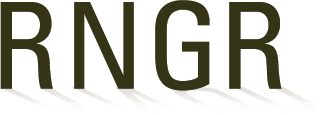Lamiaceae (Lepechinia)
Lepechinia (fragrans)
Lamiaceae
Mint Family
Lepechinia
fragrans
(Greene) Epling
Fragrant Pitcher Sage
LEPFRA
Catalina Island, California
Fragrant pitcher sage is found throughout southern California. It is rare on Catalina Island, and inhabits chaparral and coastal sage shrub communities.
plants
seed
Container (plug)
#2 tree pot (380 cubic inch)
11 Months
Height: N/A
Caliper: N/A
Root System: Firm root plug in container.
Capsules are hand collected when they are fully matured. We have collected capsules from late June through July.
Fruits dry in paper bags in a warm, dry room.
After seeds have been cleaned, they are stored under refrigeration in air tight glass containers at 40 F and 40% RH. With 2 collections, seeds average 3.2 grams per 100 seeds.
We have used a 3 minute Physan fungicide soak or a 3 minute 5% bleach solution to surface sterilize seed coats prior to testing or sowing.
We have tried several treatments to maximize germination rates: hot water, distilled water soak followed by 4 week cold, moist stratification at 40F, and a smoke water treatment for 24 hours.
Germination percentages have ranged from 4 to 10%/hot water soak, 32%/ distilled water soak and 4 week cold stratification, and 52%/24 hr smoke water treatment.
For the liquid smoke treatment, we use Wright's Liquid Smoke at the rate of 1:2 (v:v)liquid smoke to water.
The James H. Ackerman Native Plant Nursery is located on Catalina Island off the coast of southern California. From 1993 to 2004, the average maximum and minimum temperatures have been 75.4 F and 46 F,with an average of 361 frost free days per year and annual rainfall of 14 inches.
The facility is comprised of shade houses, mist propagation house, and an outdoor growing compound. All propagation environments are utilized at different stages of seedling growth to provide for the variance in temperature and shading requirements needed during the growing season. We irrigate all containers with an overhead emitter system in the shadehouses and use a drip system or hand water in the outdoor nursery.
Seeds are germinated during spring months in a shadehouse were they remain for several weeks. Flats and containers are filled with a 1 inch layer of special seed germination mix of 1:1 (v:v) Sunshine Professional Growing Mix and sand on top of 4:1:1 (v:v:v) peat, perlite, and organic compost. We incorporate Osmocote time release fertilizer (9 month release rate) (14 N:14P2O5:14K2O) at the rate of « cup per 0.75 cubic yard of medium. Seeded flats are watered with an overhead emitter system as needed.
Seeds germinate 2 to 4 weeks after sowing. This species can be susceptible to damping- off disease, so plants must be watered carefully.
2 to 4 weeks
After seedlings are well established and have at least 2 true leaves, they are transplanted into pine cell containers filled with a growing medium of 4:1:1 (v:v:v) peat, perlite, and organic compost. Osmocote time release fertilizer (9 mo release rate) (14 N:14P2O5:14K2O) is incorporated into the medium at a rate of of « cup per .75 cubic yards of medium.
We shift pine cell container plants once they are root tight to #2 treepots (380 cubic inches) by the end of August. We top prune as needed to encourage branching.
6 to 9 months
Any nursery stock grown under shadehouse conditions are hardened by placing them in full sun exposure for a minimum of 2 weeks prior tooutplanting.
2 to 4 weeks
Containerized seedlings are over wintered directly in the open growing compound.
Variable; depends on out planting date.
Herrera, Mike; Takara, Janet. 2006. Propagation protocol for production of Container (plug) Lepechinia fragrans (Greene) Epling plants #2 tree pot (380 cubic inch); Catalina Island Conservancy Avalon, California. In: Native Plant Network. URL: https://NativePlantNetwork.org (accessed 2025/07/16). US Department of Agriculture, Forest Service, National Center for Reforestation, Nurseries, and Genetic Resources.





